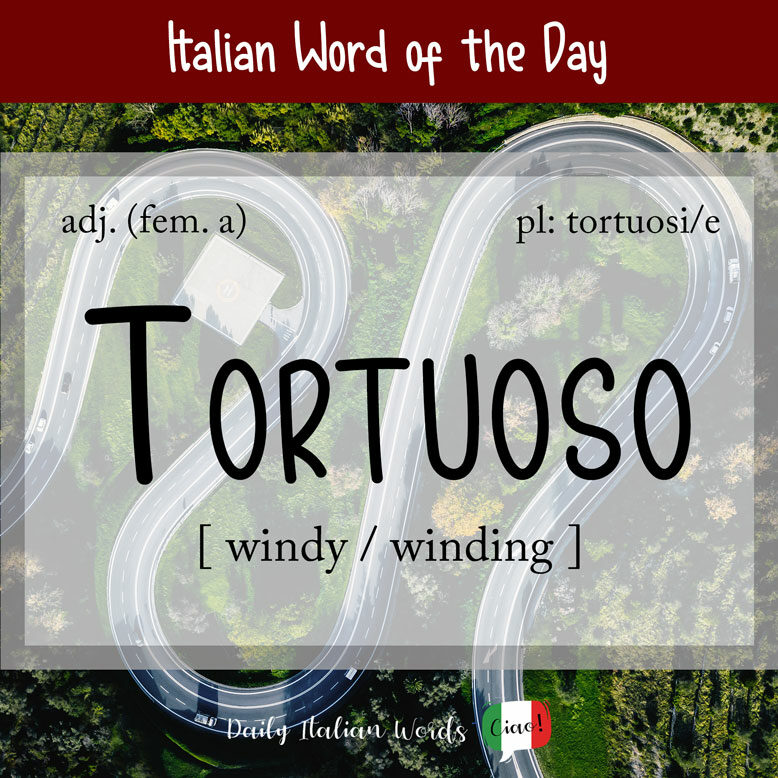If you are familiar with the word tortuous in English, you should have no trouble remembering its Italian equivalent tortuoso, which usually translates as windy or winding in everyday English.
tortuoso
windy / winding

Adjectives such as tortuoso always agree with the noun they describe, which means that they have to demonstrate whether they are masculine or feminine and singular or plural. This is achieved by changing the ending of the adjective. For example:
- il sentiero tortuoso (masc. sing.) = the winding path
- la strada tortuosa (fem. sing.) = the windy road
- i fiumi tortuosi (masc. plur.) = the winding rivers
- le vie tortuose (fem. plur.) = the windy roads
Note: Although it looks a lot like the English word torturous, it has nothing to do with the act of inflicting pain!
Il sentiero tortuoso ci condusse attraverso una foresta di querce.
The winding path led us through an oak forest.

Often tortuoso is used in a figurative sense to refer to things that are complex, ambiguous, unclear, or devious in nature, such as a person’s way of thinking or behaving.
- un racconto tortuoso = a complex / intricate story
- un ragionamento tortuoso = a convoluted reasoning
- una spiegazione tortuosa = a tortuous explanation
Giada fa sempre dei ragionamenti tortuosi.
Giada’s reasoning is always convoluted.
Heather Broster is a graduate with honours in linguistics from the University of Western Ontario. She is an aspiring polyglot, proficient in English and Italian, as well as Japanese, Welsh, and French to varying degrees of fluency. Originally from Toronto, Heather has resided in various countries, notably Italy for a period of six years. Her primary focus lies in the fields of language acquisition, education, and bilingual instruction.


